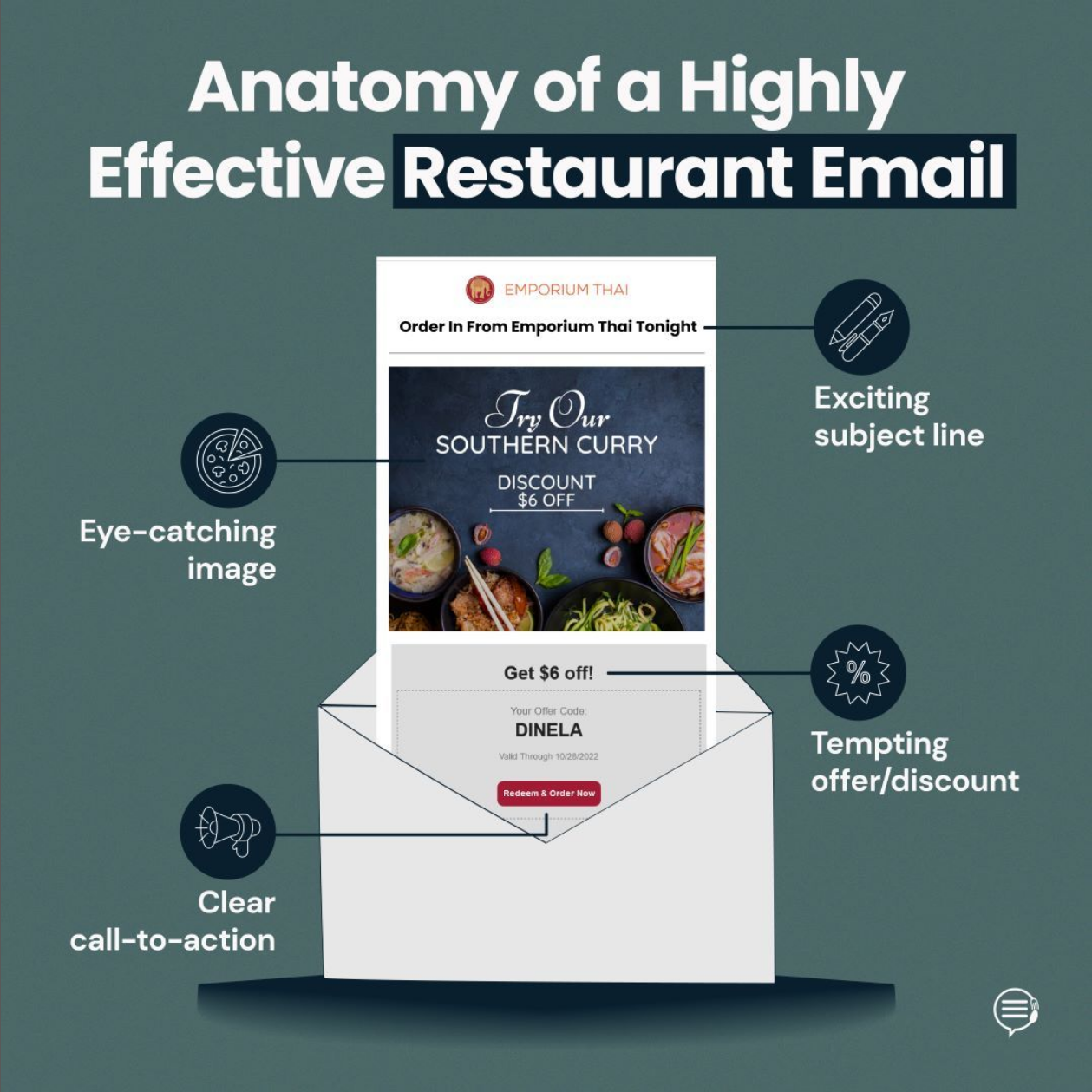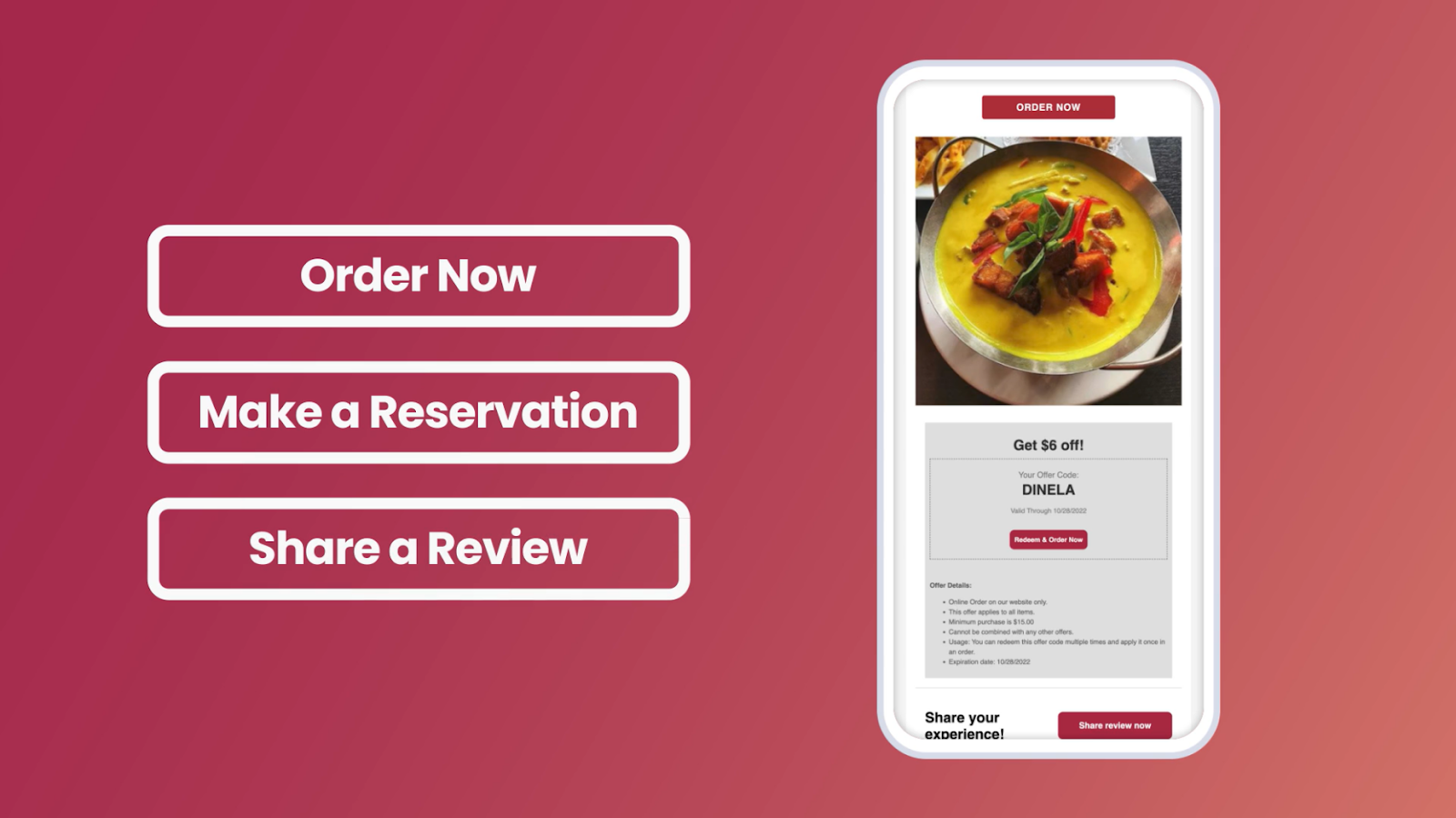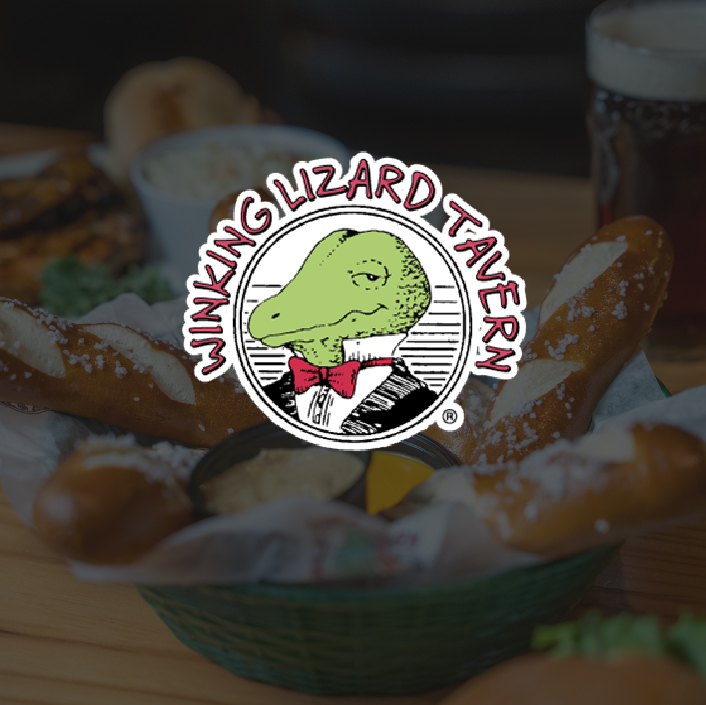
How to build emails for restaurants

With nearly two-thirds of consumers revealing that a single email has influenced their purchasing decisions, the value of email marketing is undeniable. Yet, the challenge remains: how do you craft an email that captivates? What crucial information should it contain, and how can you ensure your message doesn’t get lost in a crowded inbox? Fear not, we’re here to unravel the mysteries and provide essential insights on crafting a compelling restaurant email!
The anatomy of a restaurant email

The first step to making a great restaurant email is understanding its components. Let’s break it down:
- Subject line: This is like the email’s headline. It will be the first thing people see in their inbox.
- Header image: This is the picture that sits at the top of the email.
- Body copy: This is the main writing in the email, giving folks all the details of your message.
- Value proposition: This is the reason you are emailing someone and should serve as a strong incentive for your audience to open your email and take action from it. It should be incorporated in the subject line and body copy. For example: You deserve a break…let us handle dinner tonight.
- CTA or Call-to-Action: This is the button, text, or link that encourages readers to take the next step, like placing an order or reserving a table.
Restaurant email best practices
The pieces mentioned above are the building blocks to a successful email, but crafting a compelling message that leaves an impression on guests can be a bit of an art and a science. Let’s explore some of the best practices for getting the most out of your restaurant’s communications.
Make your subject line pop
A subject line is your first opportunity to grab the readers’ attention, calling them to open your email. Keep it concise and compelling, offering a sneak peek into the value awaiting your audience. Whether it’s an enticing discount, an upcoming event, or the return of a beloved dish, incorporating your value proposition is key to generating interest. Consider using emojis to add a playful touch to your message to help it stand out in guests’ inboxes.
To gauge your subject line’s impact, track the open rate—the number of guests who opened your email divided by the total number of guests who received it. A higher open rate indicates a successful subject line. Feel free to test different value propositions, emojis, and language to see what your readers find the most interesting.
A picture’s worth a thousand words

After capturing your reader’s interest with a compelling subject line, the next stop on their journey is the all-important header image. For restaurants, the solution is appetizingly simple: showcase a high-quality image of one of your delectable dishes. Ensure the image aligns with the email’s content; for instance, if your email discusses upcoming holiday specials, feature a photo or image that reflects the festive theme.
A header image can be a great place to include a headline as well. If you opt to include one, it should be succinct and echo the value proposition from your subject line. Consistency in messaging ensures a seamless experience for your audience.
The meat and potatoes
Now that your audience is intrigued by your subject line and captivated by the header image, it’s time to delve into the heart of the message—the body copy. This is where you unfold the details hinted at in your subject line, providing crucial information about your value proposition, like promotion duration or event details. It both equips your audience with the information they need to make the most of your offer and creates a sense of urgency. By presenting information strategically, you prompt immediate action from the reader.
Don’t assume details equate to dullness. Inject vibrancy into your copy with playful language and active voice to maintain reader engagement. Keep it light and lively. Also, resist the temptation to craft lengthy paragraphs; break down your content into bite-sized pieces to ensure readers find the experience enjoyable rather than daunting.
Lights, camera, call-to-action!

The CTA is the key to unlocking your email’s true potential as it guides readers towards the action you want them to take. Whether it’s something general, like exploring your website, or something more specific, like reserving a table for an upcoming event, integrating a CTA provides valuable insights into the impact of your message. You can measure the number of clicks an email generates and (with the right tools) measure online ordering revenue earned from the emails you send.
CTAs should be vibrant colors to distinguish them from the rest of the email and to catch the reader’s attention. Link these buttons directly to the desired destination to minimize friction for your audience. For example, if your CTA urges readers to ‘Place an online order now,’ make sure the link takes them directly to your online ordering page. The copy on a CTA should be brief and use urgent language like “Make a reservation” or “Order now”.
Other email marketing tips to consider
It takes time
Email marketing is a journey, not an overnight transformation. While sending that inaugural email may spark excitement, it’s essential to set realistic expectations for your restaurant’s marketing impact—success requires consistency and iteration. The first few emails you send are a great opportunity to learn more about your audience, tighten up your restaurant’s branding, and define your marketing process.
Automate wherever possible
Incorporating automation into your email marketing strategy is a game-changer for delivering personalized messages without demanding extra work from you or your team. Platforms like Popmenu consider recent guest actions and send valuable content when it matters most. For instance, if a diner places an online order, automated email tools can seamlessly follow up with a request for a review.
Don’t be afraid to take advantage of AI solutions either—they are a great way to streamline the content creation process and are often just as impactful as copy written from scratch. Whether you’re struggling to come up with the perfect subject line or looking to build out a marketing plan for the next month, AI Marketing can use data from your restaurant’s website to craft a unique and effective marketing communications plan so all you have to do is hit “approve”.
Data is key
While we've touched on it earlier in this article, the significance of tracking and analyzing data cannot be overstated. Monitoring metrics such as open rates, click-through rates, and revenue generated from your emails provides valuable insights into performance. By leveraging this data, you better understand which messages resonate most with your audience. This knowledge helps you refine your messaging and email strategy, and using it wisely can lead to increased sales later on.
Keep learning
Undoubtedly, email marketing is a vast and dynamic subject, encompassing more than we can explore in a single blog post. For a deeper dive into leveraging technology for a truly impactful email marketing campaign, we invite you to explore our comprehensive Email Marketing Toolkit. This resource is designed to equip you with the tools and insights needed to navigate the evolving landscape of email marketing successfully. Happy emailing!





.jpeg)






